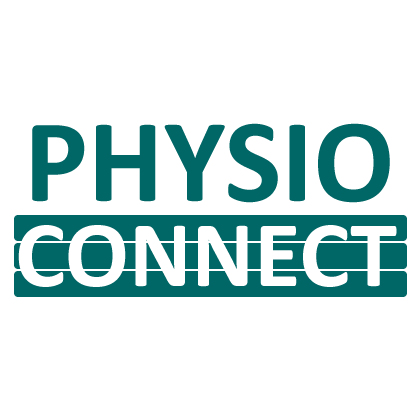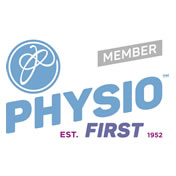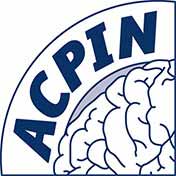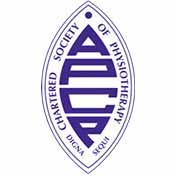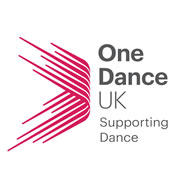 Running injuries are amongst the most common sports-related injury and can be very specific due to the nature of the sport. Over 80% of runners have experienced an injury caused by running at some point, interrupting training and preventing them from enjoying the sport they love.
Running injuries are amongst the most common sports-related injury and can be very specific due to the nature of the sport. Over 80% of runners have experienced an injury caused by running at some point, interrupting training and preventing them from enjoying the sport they love.
Although running may seem the most natural activity in the world for the body to do, few runners have an ideal running 'gait' and biomechanical set-up which can very quickly lead to niggles, overuse injuries and more complex musculoskeletal problems.
Why do running injuries occur?
Each time a runners foot hits the ground, it generates forces equivalent to at least 3 times the person's body weight. If there is a biomechanical abnormality anywhere along the chain from the foot upwards, stresses placed on the body during running become abnormal, leading to inflammation and injury.
Biomechanical issues can include: Over-pronation of the feet, abnormal loading through the mid and fore-foot, patello-femoral maltracking, iliotibial band tightness, hip flexor tightness / rectus femoris tightness, piriformis overactivity, and poor core strength and control.
Everyone's biomechanics are unique to their body. When you consider the above potential biomechanical issues and combine that with choice of training programme, shoes, terrain, hydration and nutrition etc, you can see why running becomes less of a natural and simple activity and more of a complex science if problems are to be prevented.
Common Running Injuries
Back Pain
Can be caused by a number of factors such as leg length discrepancy, increased anterior tilt of the pelvis due to overpronation of the feet or tight hip flexors and poor core control. These can lead to overactivity and tightening of muscles in the back, facet joint irritation and dysfunction and nerve irritation.
Anterior Hip Pain and Groin Pain
Can arise from a number of sources. Overuse of the hip flexor complex and associated bursitis, adductor tendinopathy, sacroiliac dysfunction, hip joint degeneration and labral tears. The source of these problems may be from overtraining or from a biomechanical problem on the affected side.
Lateral Hip Pain
Most commonly comes from bursitis of the iliotibial band at the greater trochanter, or tendinopathy at the iliac crest. Often caused by reduced gluteal and core control or from abnormal biomechanics on the affected side.
Posterior Pelvic Pain
Often due to a tight and overactive piriformis (can lead to sciatica), sacroiliac dysfunction, bursitis of the ischial tuberosity, and hamstring tendinopathy. The source of these problems is often biomechanical in nature.
Knee Pain
Possibly the most common site of injury for runners and often arising from the patello-femoral joint (knee cap joint). Problems can occur due to abnormal quadriceps muscle balance (tighter and overactive vastus lateralis), tightening of the iliotibial band, overpronation of the feet, calf tightness but can also occur due to a person's natural size, tilt and stability of the patella which can predispose them to knee pain during activity. Knee pain can also arise from the knee joint itself, for example meniscal (cartilage) injury / degeneration or joint line irritation from abnormal torsional stresses through the joint when running.
Shin Splints
A general term used to describe pain arising from the front of the shin and usually as a result of inflammation of the tibial muscles and tendons in the lower leg from repeated stresses. Can be caused by running on hard ground, reduced cushioning of shoes, tight calf muscles, weaker anterior tibial muscles and overpronation of the feet. Other tibial muscles prone to injury / overuse include tibialis posterior and the peroneal muscle group.
Achilles Problems
Can result from tightness in the calf muscles, inappropriate footwear and abnormal foot biomechanics and overtraining. If mismanaged, it can lead to a chronic achilles tendinopathy which can be difficult to settle.
Plantar Fasciitis
'Arch pain' is often caused by frequent stress on the plantar aspect, or bottom of the foot. The plantar fascia is a fibrous supportive band of tissue on the sole of the foot, which can become overstressed with forefoot and rearfoot instability and excessive pronation.
Sesamoiditis
The sesamoids are a set of accessory bones found beneath the large 1st metatarsal bone and are tiny bones within the tendons that run to the big toe. Inflammation and sometimes fracture of these bones can occur during increased and repeated impact. It can often result from a sudden increase in training, hill running, jumping etc or from poor cushioning under the sole of the foot.
Metarsalgia
Metatarsalgia is a common overuse injury, described as pain in the forefoot that is associated with increased stress over the metatarsal head region (ball of the foot) and can affect the bones or the joints of the 2nd, 3rd, and 4th metatarsal heads. Metatarsalgia is often referred to as a symptom, rather than as a specific injury. Common causes of metatarsalgia include interdigital neuroma (also known as Morton neuroma), abnormal foot biomechanics and inappropriate footwear.
Hallux Limitus
This is a term used to describe the reduction of movement available at the 1st metatarsal joint (big toe joint), and loss of 'up' motion of this joint can result in pain during running and walking. Virtually all hallux limitus problems occur during the contact phase of gait (when the foot hits the ground) due to increased biomechanical stress at this point. Hallux limitus can result from gradual deterioration of the joint due to age, or from abnormal biomechanics of the foot during running and walking. It often causes the individual to shift their weight to the other side of the foot and this can in turn lead to inflammation of the other metatarsal joints.
How can physiotherapy help?
Physiotherapy can be effective in treating the symptoms and the source of the problem / injury. Through detailed assessment and biomechanical analysis of the body, physiotherapists can detect the underlying cause of the injury, and help to treat the affected joint or tissue. This often works well in conjunction with podiatry, as often, the source of the problem is driven by abnormal biomechanics of the feet. Custom-made orthoses (insoles) from a podiatrist may be appropriate in the correction and management of biomechanical problems.
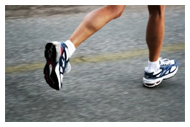 Manual therapy for soft tissue and joint injuries can be effective in reducing scar tissue and muscle tension, increasing tissue and joint flexibility, and restoring normal muscle balance and joint control through specific and progressive rehabilitation programmes. Your physiotherapist will also advise you as to when it is safe for you to return to running and can guide your training programme to avoid further injury.
Manual therapy for soft tissue and joint injuries can be effective in reducing scar tissue and muscle tension, increasing tissue and joint flexibility, and restoring normal muscle balance and joint control through specific and progressive rehabilitation programmes. Your physiotherapist will also advise you as to when it is safe for you to return to running and can guide your training programme to avoid further injury.
A biomechanical 'screen' of your body can be useful in detecting potential problem areas, before they become a problem with running. This involves a thorough assessment of posture, joint position and mobility, muscle and tissue flexibility, muscle and core control and gait. A programme designed to address any issues found on assessment can then be issued along with appropriate advice, so that you can enjoy your running with reduced risk of injury.
PEAK Physiotherapy Limited also works in close conjunction with Specialist Podiatrists and Podiatric Surgeons based in and around the Leeds area.
For further information about biomechanical assessments, podiatry or any of our related services, please telephone our Clinical Director Sarah Joice on 07908 684441.


